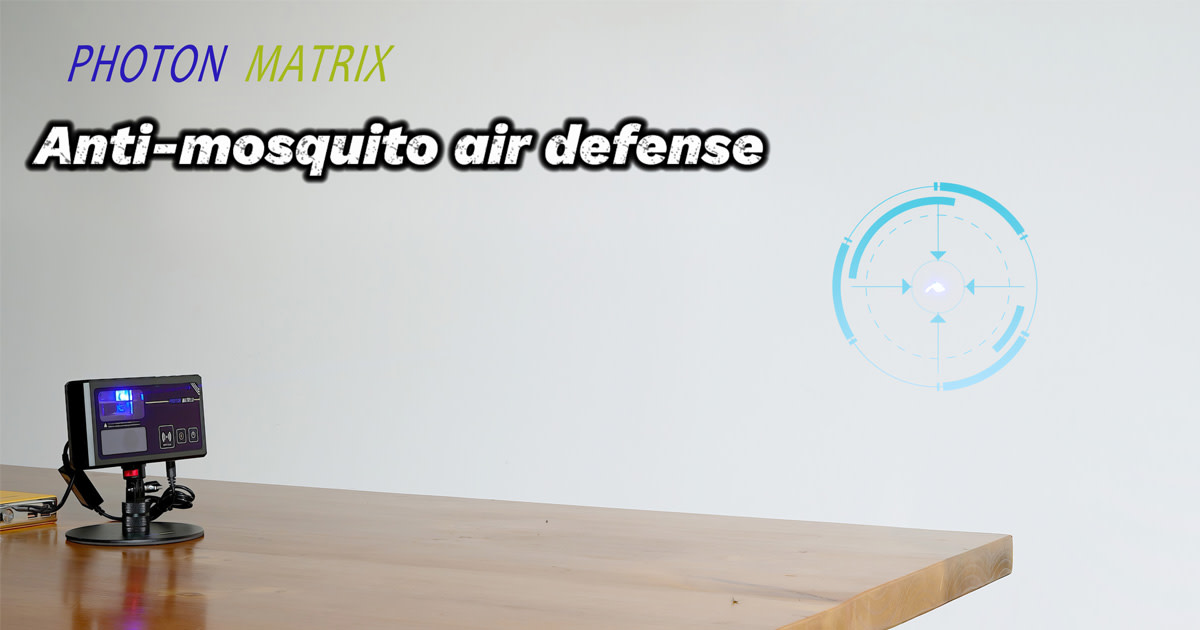- Make Things
- Posts
- A Big, Beautiful Blimp
A Big, Beautiful Blimp
Kayte Sabicer's replica from Blade Runner is on the cover of Make: Vol 94

It’s a big deal for us when the next issue is finally sent off to the printer. The 94th issue of Make: magazine is now out of our hands and should be on its way to subscribers soon.
For some, the Props and Models you see in movies are the standout stars, the thing we remember, and some people like Kayte Sabicer are determined to replicate. That’s the cover story for this issue.
Here’s a bit of a preview of what’s coming.
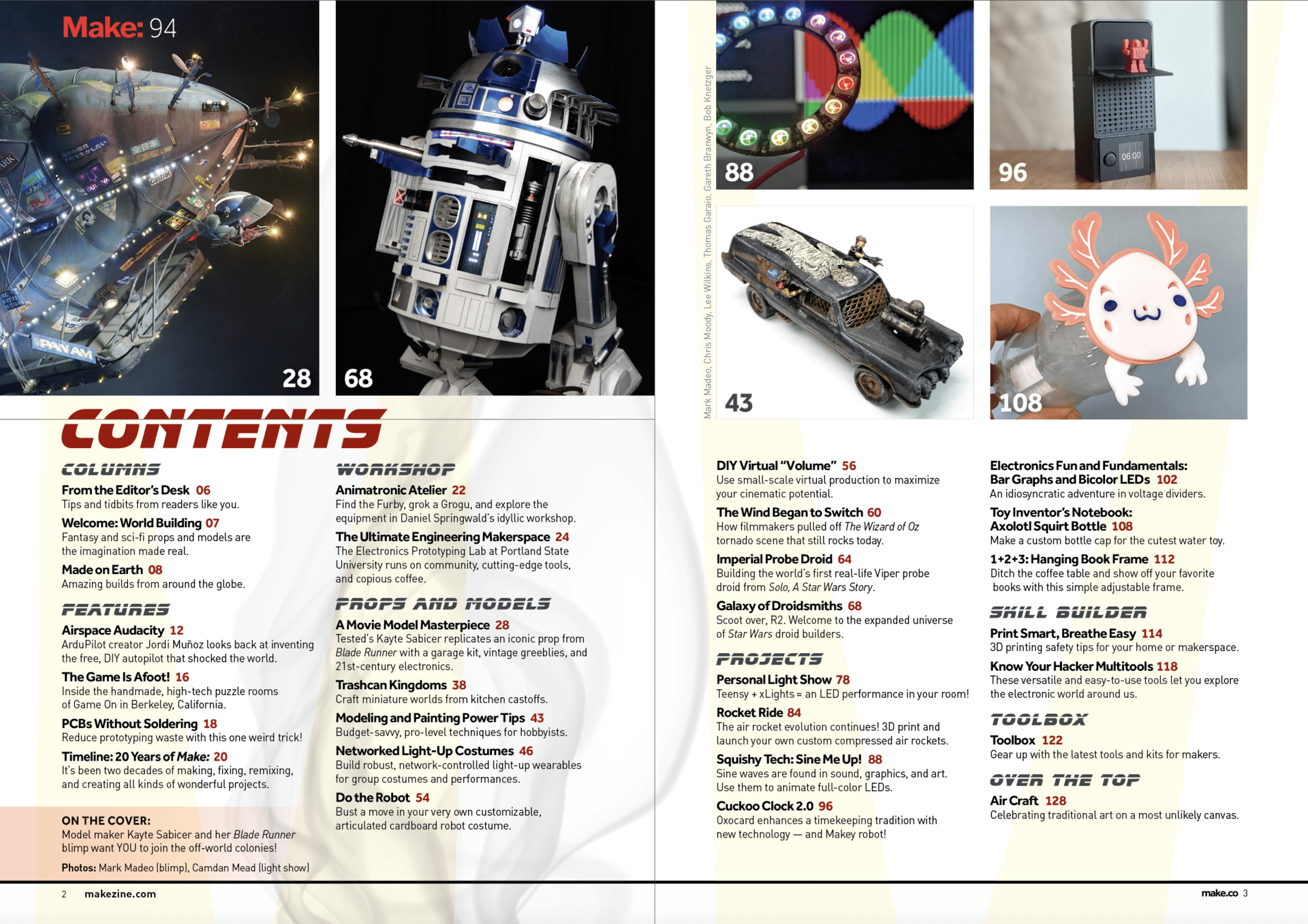
Table of Contents
A Garage Kit
In Make: Vol 94, pro model maker Kayte Sabicer describes how she started her project to build a half-size replica of the Off World blimp from Blade Runner using a garage kit. Kayte writes:
For those not deep in the world of model making, a garage kit is a model kit put together by someone who has done all the legwork for you ahead of time. They’ve sourced most of the needed materials and hardware, and probably given you a heads-up on the build process. This kit has not been mass manufactured, is usually not licensed, and depending on your source, may or may not be entirely accurate.
Luckily for me, this garage kit was put together by an extremely talented maker in his own right, Jason “Moff” Eaton. Here in front of me was a massive alien cocoon-looking thing, the body of a blimp.
Kayte walks us through her meticulous build process, which she did working as a contributor for Adam Savage. “Adam is a stickler for accuracy,” she wrote. Kayte had a special connection to the blimp; her mentor at college was Lawrence Paull, the Oscar-nominated production designer who created the original masterpiece.
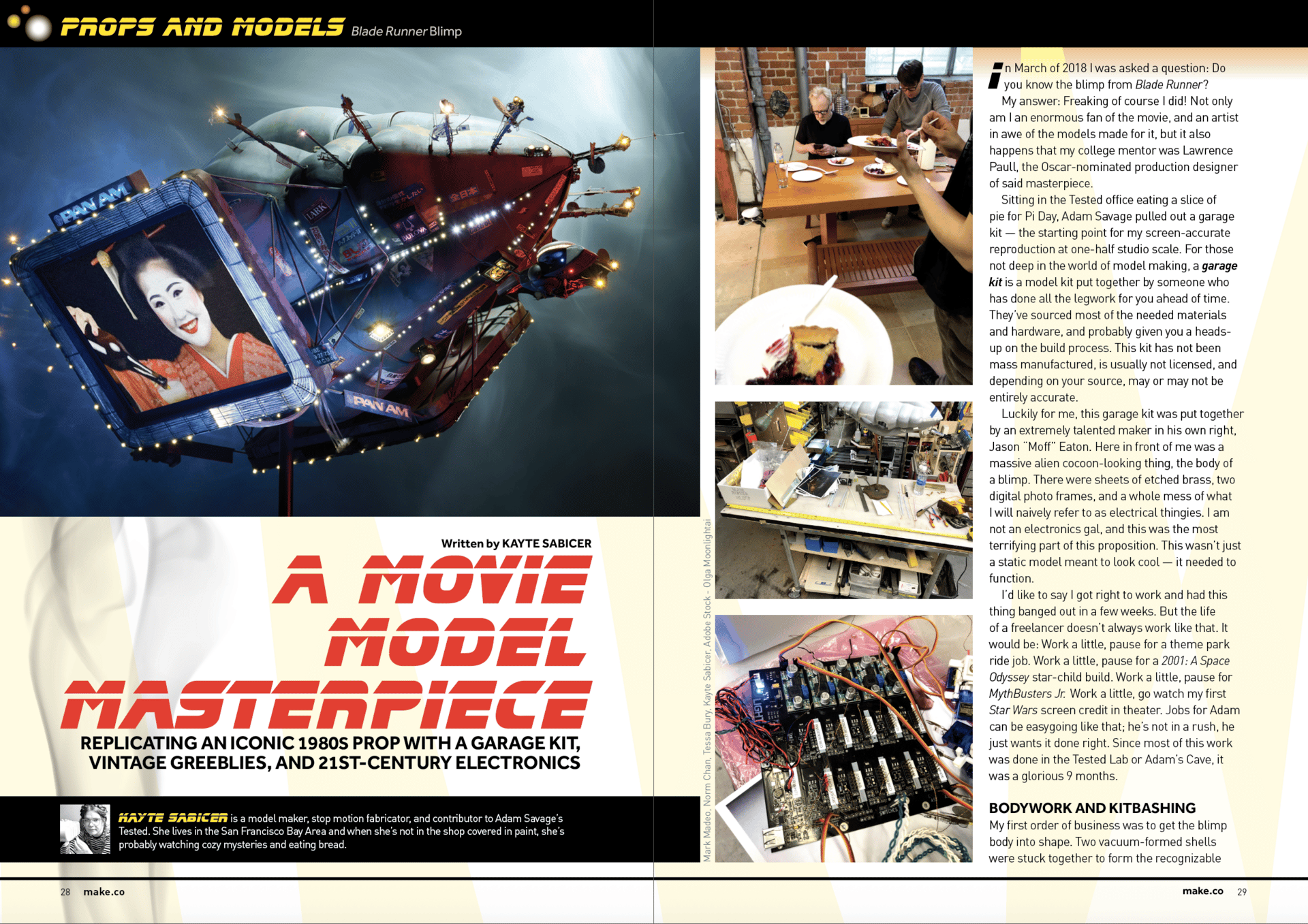
Kayte is on the cover of this issue of Make: holding her replica blimp, which is at the printer and will be in our hands at the end of the month. I mentioned Kayte’s talk at Maker Faire Miami in a previous newsletter.
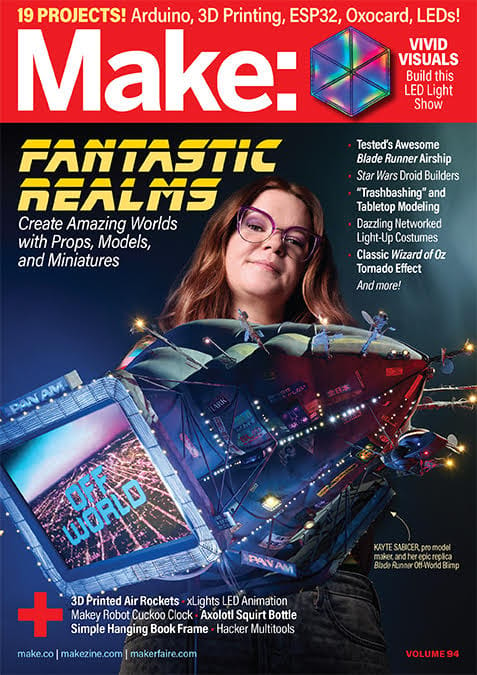
Make: Vol 94 cover
The story has a sidebar written by Mel Ho, an interdisciplinary artist who worked on the electronics for Kayte’s project. “When approached by Kayte for the Blade Runner blimp project, I immediately saw that the original electronics were nonfunctional. Rather than repair the damaged system, I opted for a complete redesign that would better serve the project’s needs while maintaining authenticity to the iconic prop,” she wrote. How typical is it that when you offer to help out a friend, the project which looked easy is actually a lot more work than you thought.
Read more from Kayte and Mel when this issue hits your mailbox. If you’re not a subscriber to Make:, you can order a subscription today.
Trashbashing
Longtime Make: contributor Gareth Branwyn writes in “Trash Can Kingdoms” about trashbashing in the new issue. Gareth explains how he retrieves items from his recycling bin and uses them to create models.
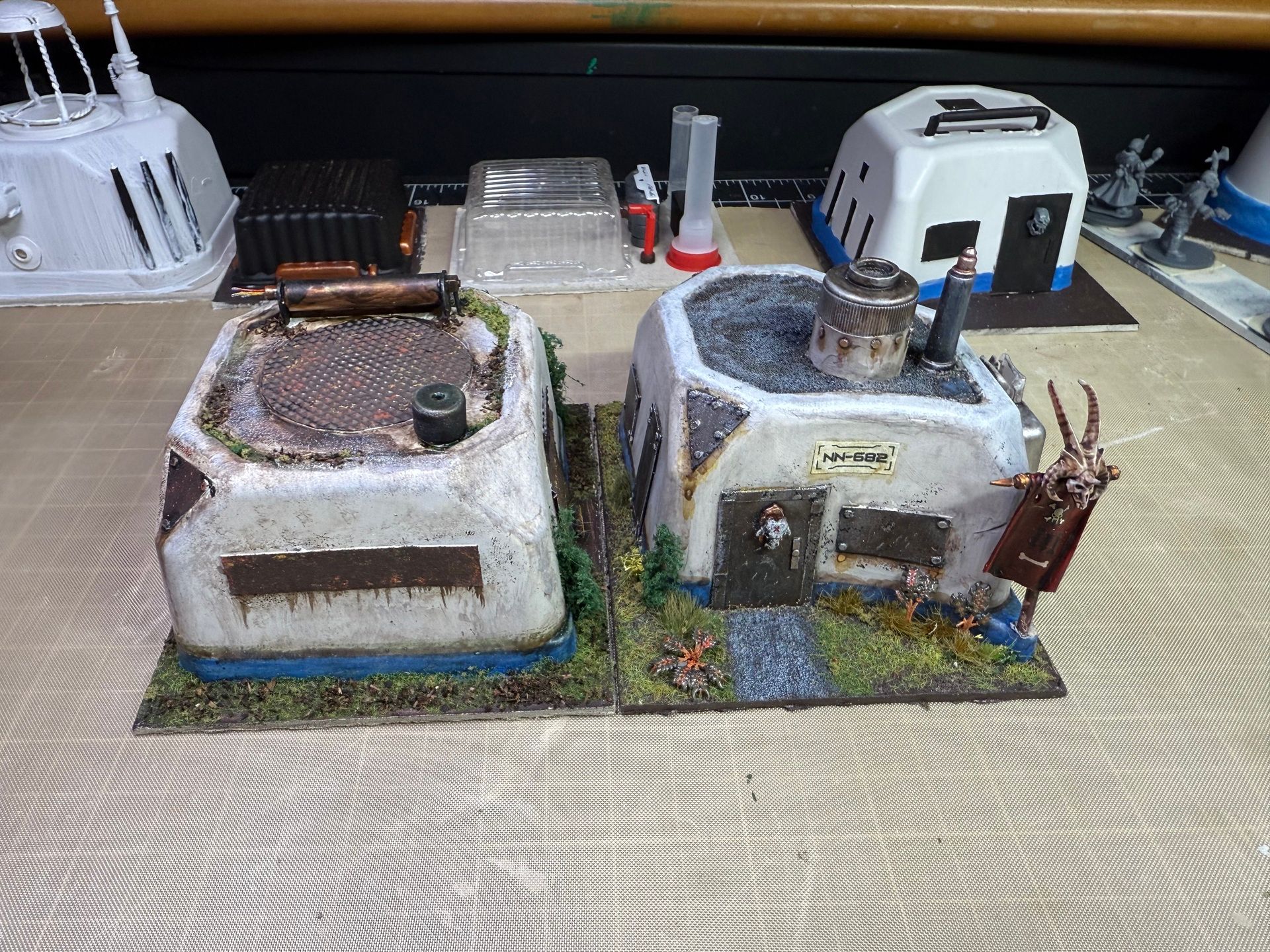
Welcome to the world of trashbashing, a branch of hobby modeling especially popular in tabletop and role-playing gaming circles. Once you’ve acquired an eye for seeing the rich My Pescan hacker, Swage, scanning a Bracken rooftop for energy signatures. treasures lurking in your kitchen waste bin, learned a few basic modeling tips, some painting and (all-important) weathering skills, you can build pretty much anything you need to create your own tabletop world.
Modelers share their trashbashed creations in online groups on Facebook, Reddit, Instagram, and elsewhere — there are even competitions where YouTube trashbashers challenge each other to make spaceships exclusively out of deodorant sticks (“deosticks”), robots out of spray bottle parts, or models entirely from sprue material (the leftover frames used in injection molding). It’s an addictive and affordable hobby to get into, especially compared to most forms of game modeling.
Twister
Ever wonder how the tornado scene in The Wizard of Oz was filmed in the days before CGI? Designer and fabricator Jesse Velez tells us that this “most memorable moment” was “an incredibly realistic sequence, even by today’s standards.” It was designed by Hollywood special effects artist Albert Arnold “Buddy” Gillespie, and Jessie explains how it worked.
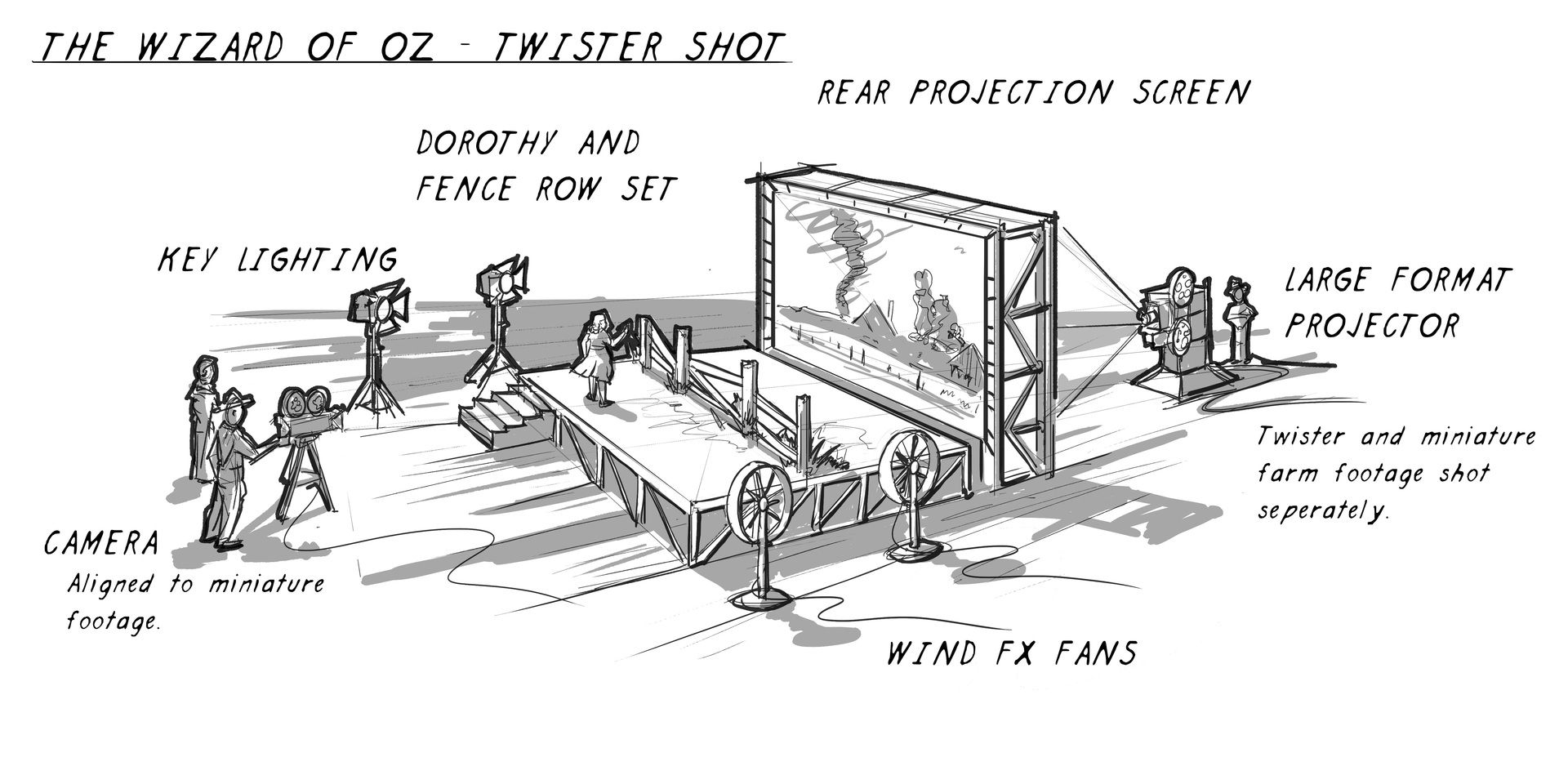
Illustration by Jesse Velez
The tornado itself consisted of a 35-foot-long muslin “stocking” (likely a windsock from an airport runway), photographed moving behind miniatures of a Kansas farm and fields placed in the foreground. The muslin stocking was hung from a large rotating plate, attached to a high-speed motor, mounted to a gantry crane running the length of the studio ceiling. While spinning, this muslin funnel could be moved up and down, twist, and sway — mimicking the motion of a real tornado. The entire mechanism was manipulated with wires and pulleys, giving the filmmakers precise control over the funnel’s movement.
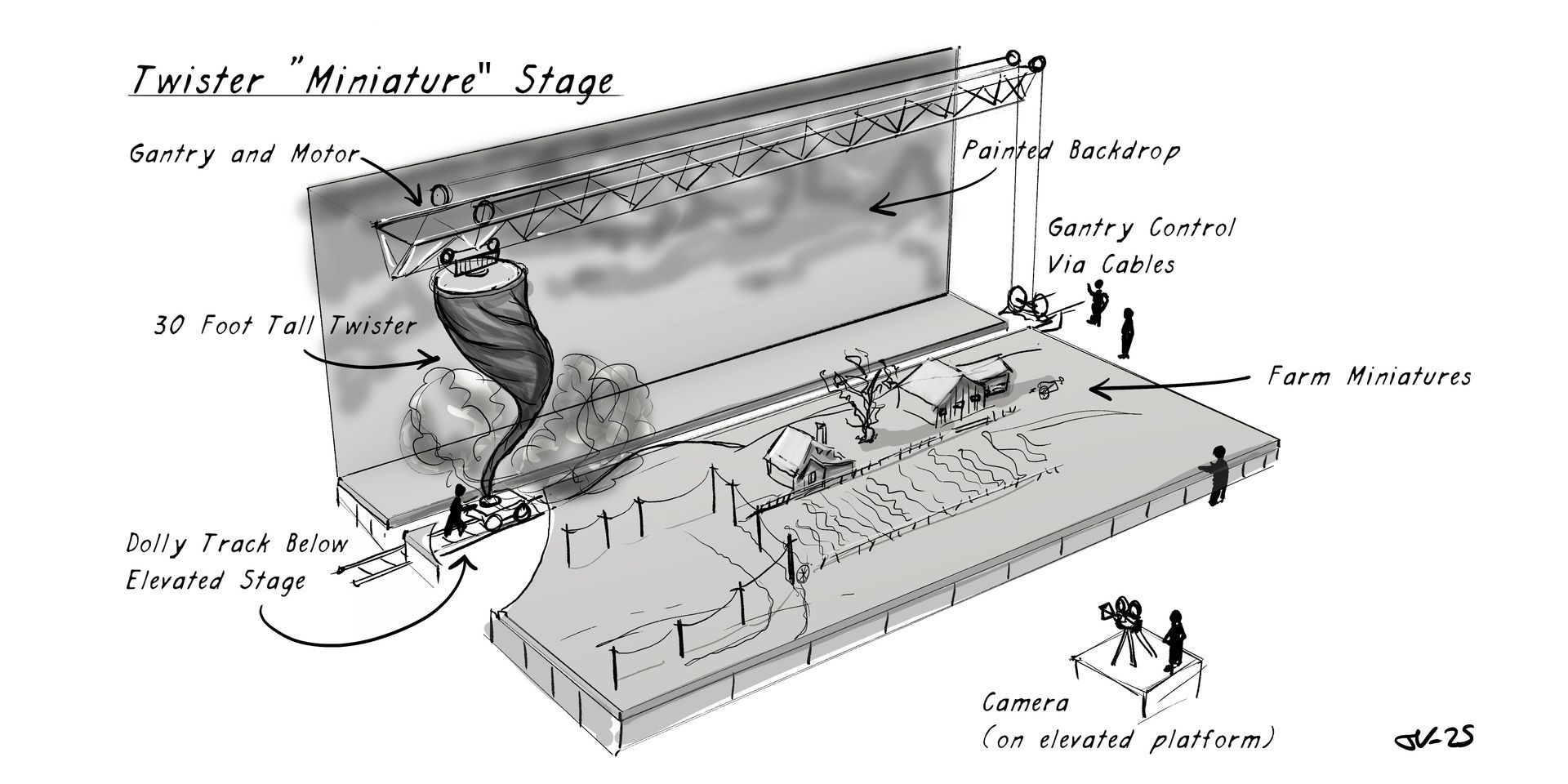
Illustration by Jesse Velez
Jesse is working on a Make: book, Making for the Movies. I hope it has lots of illustrations like the ones above.
I’m a Believer
In Brno in the Czech Republic last week, I gave a talk at FAB25, titled “I’m a Believer.” I talked about my belief that “all of us are makers.” I actually go back to the dark ages, talking about how it seemed impossible to changes institutions like the medieval church. But beliefs give us the power to fight for change and I’m particularly interested in the shared belief in the power of making to change culture broadly and to change education. Just as the printing press played a major factor in the Reformation, I believe AI will disrupt education by giving students direct access to knowledge and insight. Here is a link to my talk.
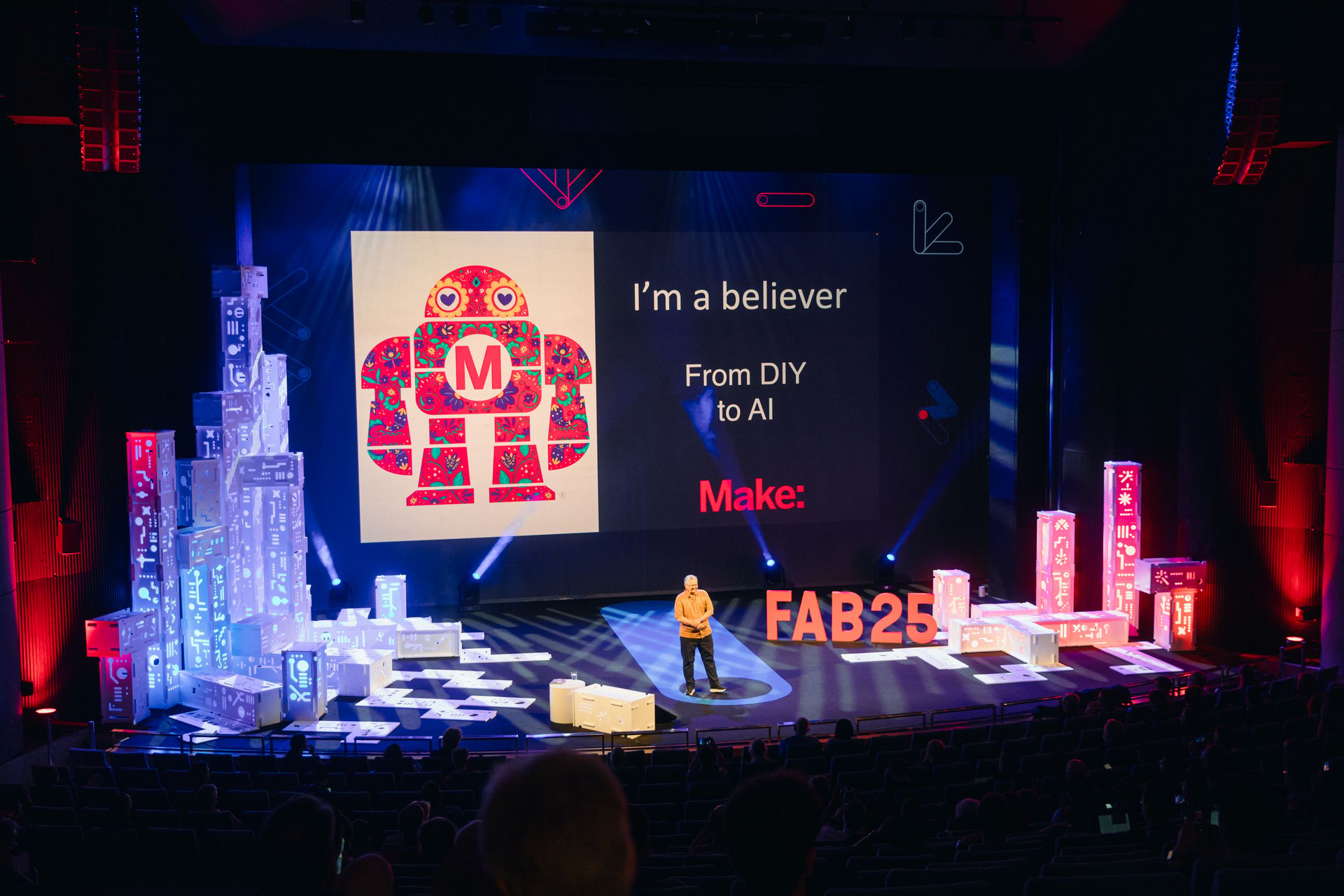
FAB25 photo by Stepan Filip
Mosquito Dome
This might be a bit of overkill but a Chinese company has created a laser system called Photon Matrix that detects and swats mosquitos at a rate of 30 per second. Its Indiegogo campaign aimed to raise $20K and it’s already at over $1M. Perhaps it shows just how much people want to be rid of pesky mosquitos in their backyards. Does it harm lady bugs?
We covered a laser system for killing mosquitoes in Make: Vol 23. 3ric Johanson at Intellectual Ventures Laboratory told us about a gadget that tracked mosquitoes and blasted them out of the air with lasers. Johanson described how his how his team solved four key problems to make it work: spot the bugs, target ’em, identify ’em (only females mosquitos bite — you knew that), and then blast ’em in milliseconds. The project’s goal was to fight the spread of malaria.
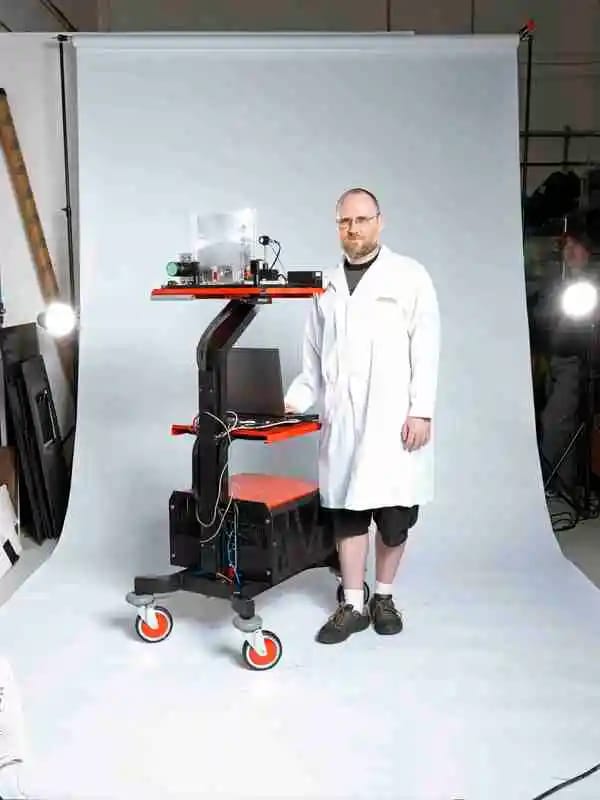
Here’s the background on the project from Wikipedia, which sadly shows that even well-funded projects often never make it out of the lab.
A mosquito laser is a proposed device that would use lasers to kill mosquitoes. The primary goal would be to reduce malaria infection rates. In 2007, the Bill & Melinda Gates Foundation asked Intellectual Ventures to find a way to fight and eventually end malaria. There, astrophysicist Lowell Wood had the idea to use lasers. Their project received considerable media attention around 2010, but the device was still under development as of 2017.
Kudos to Dennis Fischer
Thanks to Dennis Fischer, a Make: reader and maker, who donated a bunch of equipment to the school I’m involved with, The Academy of Innovative Arts in Forestville CA. Dennis drove from his home in Walnut Creek to drop off a Prusa 3D printer, a scanner, and many different electronic boards and accessories. Thank you, Dennis.
Just a reminder: Maker Faire Bay Area September 26-28, 2025
Make Things is a weekly newsletter for the Maker community from Make:. This newsletter lives on the web at makethings.make.co
I’d love to hear from you if you have ideas, projects or news items about the maker community. Email me - [email protected].
